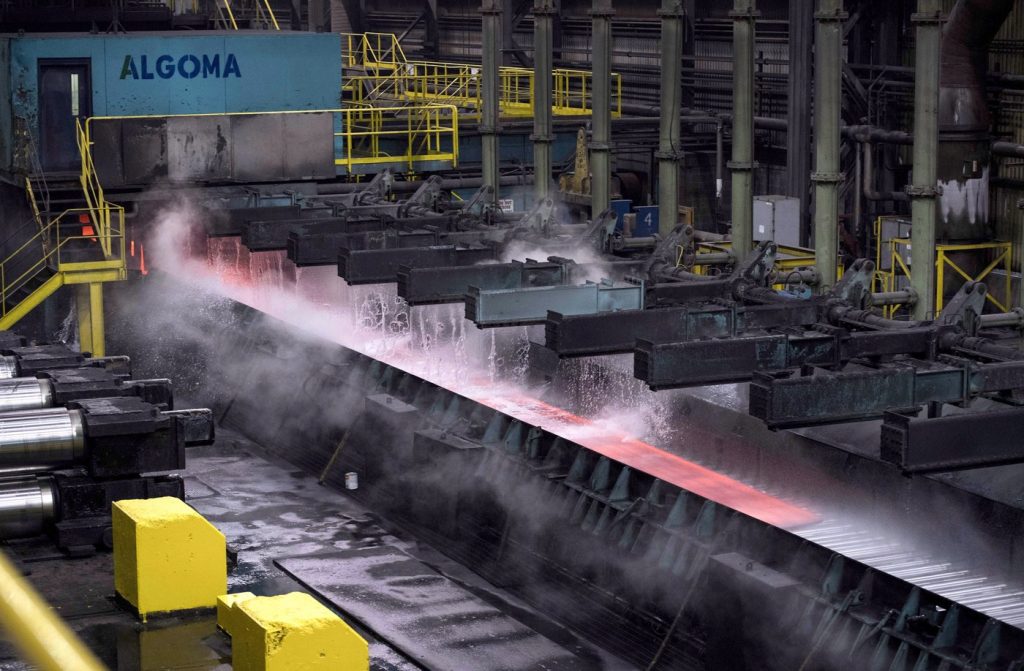TORONTO - Algoma Steel Inc. has made headlines by utilizing electric arc furnace technology, converting the heat produced by electric currents into greener steel. Although electric arc furnaces are a century-old technology and already present in Canada, Algoma considers the successful operation of its first such furnace a significant achievement, particularly in light of the existential threat posed by U.S. tariffs.
Michael Garcia, CEO of Algoma, stated in a recent earnings call, "We have reached a truly pivotal milestone for Algoma and the Canadian steel industry." As the company navigates the turbulent waters of a trade war, he emphasized that this achievement bolsters confidence in Algoma's transformation strategy, which aims to significantly reduce emissions to differentiate their products. The company has even trademarked the name "Volta" for its cleaner steel, which will be created from a combination of low-emission iron feed and scrap metal.
However, experts warn that this initiative comes at a time when the market for green steel and the broader metal industry is facing turmoil due to tariffs and price fluctuations. Chris Bataille, a research fellow at Columbia University's Center on Global Energy Policy, raised concerns about potential demand, asking, "Will the demand be there? Is there going to be sufficient demand in North America for green steel?" He pointed out that the previous U.S. administration was moving toward cleaner steel and electric vehicles, but the current political climate has created uncertainty.
Steel production is a major contributor to carbon emissions, accounting for approximately eight percent of global emissions, as per the International Energy Agency. While transitioning to cleaner methods is beneficial for the environment, demand for eco-friendly steel has predominantly been seen in the auto industry. European automakers have been reportedly paying premiums of up to 40 percent for greener materials. In contrast, the construction sector has shown hesitation in embracing these changes.
Canada has been looking to diversify its steel exports into Europe, but tariffs have also caused disruptions in that market, leading to uncertainty about demand. Tommaso Ferretti, a trade expert from the University of Ottawa’s Telfer School of Management, noted, "There is a structural demand in Europe, but to what extent that structural demand will remain in place, it's a big question mark." Algoma's CEO, Garcia, echoed these concerns, stating that the company sees little potential for exporting its steel to Europe or other international markets.
The broader steel industry is facing challenges, as evidenced by the stalled flagship green steel project at ArcelorMittal's operations in Hamilton, Ontario. Announced in 2022 with an investment of $1.8 billion, the project has not progressed beyond the engineering stage, as pricing pressures and oversupply issues continue to hinder advancements. ArcelorMittal expressed skepticism about the economic viability of green steel projects until the 2030s, with the need for favorable policies to offset high costs.
Government initiatives have emerged to support the industry, with Algoma receiving $420 million in funding for its project, while ArcelorMittal was offered $900 million to alleviate costs. However, the scope of ArcelorMittal's plans includes building a plant in Hamilton using hydrogen for iron reduction, a costly process resulting in recent project cancellations in Germany and other locations due to escalated electricity rates.
Meanwhile, Cleveland-Cliffs, which acquired Hamilton-based Stelco Holdings Inc., has shelved plans for a green steel conversion project, highlighting the unpredictable hydrogen supply and its implications for profitability. Trade expert Ferretti expressed concerns that the industry pressures might reduce investment in R&D efforts essential for cost reduction in green steel production.
Looking ahead, experts like Bataille underscore the potential for Canada to capitalize on its extensive renewable energy resources and iron ore deposits. He suggests building direct reduction plants closer to resource sources to increase the value of exports. "You could triple the value of those exports," he noted, suggesting that, despite prevailing headwinds, there might be untapped opportunities in the global marketplace.
This report highlights the challenges and uncertainties facing Algoma Steel and the Canadian steel industry as it seeks to navigate a transformation to greener production amidst political and market volatility.










